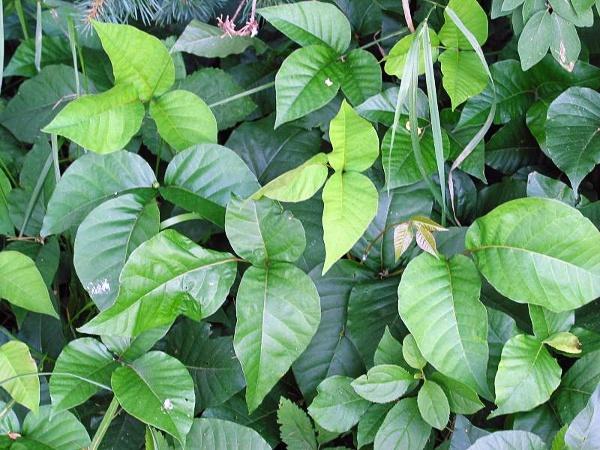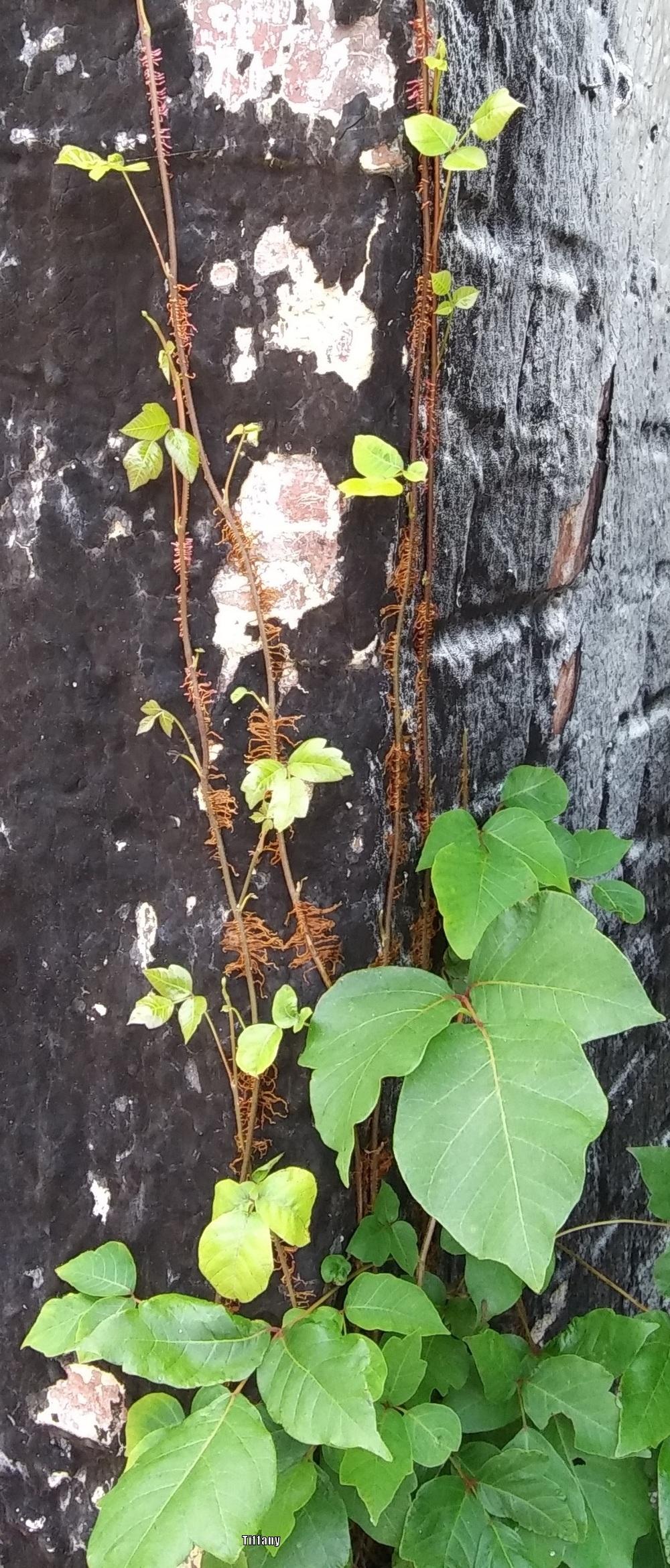There is no weed harder to control than poison ivy. Not only does it spread and resist repeated attempts to spray it, dig it, or mow it into submission, its sap contains the chemical urushiol, which causes severe rashes, itching, and swelling. Some people are allergic to urushiol and may need to go to the hospital for treatment if infected. Poison ivy grows in woodlands, abandoned fields and gardens in states east of the Rockies. It's a climber and is adapted to wet and dry soil, sun and shade. Poison oak is bushy and more prevalent out West. Poison sumac is found in the East and Southeast mostly in wet areas.

To control poison ivy you need to be diligent and careful. Always wear long pants, a long sleeved shirt, gloves, boots, and a mask when eradicating it. Wash all your clothes immediately after working with poison ivy and shower well. There are products on the market that you can apply to your skin prior to working with poison ivy to prevent it from infecting you. Never mow established patches of poison ivy or the oil will go everywhere. Don't burn poison ivy or the smoke will get into your lungs.
If you do get poison ivy, use calamine lotion or other products to dry out the blisters so it doesn't spread. Above all, try not to scratch it. It's hard, but not scratching will reduce the time it takes for the rash to go away.

1) Dig It Out. This is probably the surest way to get rid of poison ivy in the landscape. Cut back vines and dig out the roots. You may need to come back a few times to get any stray shoots from missed root pieces, but you'll exhaust the vine pretty quickly. Digging works best after a rain so more of the roots come out without breaking. Any broken roots left in the soil will resprout.
2) Smother It. If you can wait and aren't concerned about the looks of the garden patch, cut back and cover your poison ivy with black plastic mulch for the summer. This will suffocate it.
3) Cut It Out. Repeatedly cutting poison ivy down will eventually exhaust the roots. Remove the cut sections, bag them and send them to the landfill. In fields where it is low growing you can brush hog it, but clean the machine, your footwear, and clothing carefully when finished.
4) Spray It. Spraying patches of poison ivy with herbicides will set it back. However, you'll need to spray repeatedly. The most effective sprays will also harm other plants nearby if they come in contact with it. Instead of spraying, I like to paint the herbicide on the limbs.
5) Painting with Herbicides. I find this a more effective and safer way to use herbicides in the environment than spraying. Cut back the poison ivy vine to one foot off the ground. Get the recommended herbicide and soak a cotton ball in the chemical. Place the chemical on the cut stump of the poison ivy vine. Cover the stump with a yogurt container or some appropriately-sized container to cover the cotton ball and stump top. Attach the container to the stump with duct tape. This technique will focus the herbicide on the stump so it will be translocated into the roots. Also, by covering the cotton ball, animals, wildlife, and kids won't come in contact with the poison.
 Charlie Nardozzi is an award winning, nationally recognized garden writer, speaker, radio, and television personality. He has worked for more than 30 years bringing expert gardening information to home gardeners through radio, television, talks, tours, on-line, and the printed page. Charlie delights in making gardening information simple, easy, fun and accessible to everyone. He's the author of 6 books, has three radio shows in New England and a TV show. He leads Garden Tours around the world and consults with organizations and companies about gardening programs. See more about him at Gardening With Charlie.
Charlie Nardozzi is an award winning, nationally recognized garden writer, speaker, radio, and television personality. He has worked for more than 30 years bringing expert gardening information to home gardeners through radio, television, talks, tours, on-line, and the printed page. Charlie delights in making gardening information simple, easy, fun and accessible to everyone. He's the author of 6 books, has three radio shows in New England and a TV show. He leads Garden Tours around the world and consults with organizations and companies about gardening programs. See more about him at Gardening With Charlie.
 Victory Seed Company has all the seeds you want for your best garden in 2024.
Victory Seed Company has all the seeds you want for your best garden in 2024.
For 25 years, the family-owned Victory Seed Company has provided the highest quality vegetable, herb and flower seeds to families across the country. We are passionate about providing you the best seeds available that give excellent germination, robust plants, and the harvest you want. With a catalog of over a thousand varieties, we have everything, and our prices are the kinds that we'd want to pay. We have hundreds of yesterday's heirloom vegetables, as well as today's award winning hybrid selections. Get to know us by visiting our website and browsing through our online vegetable seed catalog.